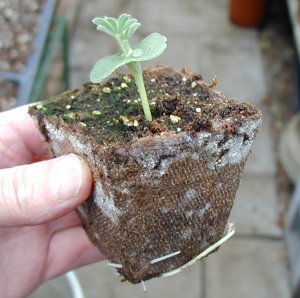Today we took the first step in starting the lupins from seed.
Lupins are perennial plants in zone 4. The plants are made up of tall 3 foot or better spikes that are covered with small flowers.
They are a versatile plant and actually help to improve the soil by fixing nitrogen from the air. Some folks are even working on the idea that lupins are high in protein and would make a good animal feed.
We are growing Russel Hybrid, some yellows and some other blue violet varieties.
Lupins have a really tough seed coat and it seems to help speed germination if the seeds are soaked overnight in water. Some people score the outer coat before soaking but we have never tried because the soaking seems to be enough. A emery board works, just scratch the surface and watch that you don’t sand your fingers down.
The lupin plants begin with star shaped leaves that hold a drop of water like a jewel.
For more about lupins check out the lupin.org page.
Today was also a day for starting coreopsis is also know as tick seed and they come in a variety of colors and sizes. Most common are the yellow sunburst and sun-ray.
We started some dwarf red, sun-ray, sunburst and bi color which as the name implies, is a 2 color bloom with yellow flowers and a red center.

They are a very popular perennial for zone 4 and colder climates. We handle them just like many other perennials where we keep them over for a winter if we have enough.
For more information on coreopsis check out the USDA page.
Everything else is coming along with the abundant sunshine we have been getting. Our biggest challenge will be space. We really need more bench space and that will be the plan for this summer.
This is a yellow lupine growing in a peat pot filled with promix. The roots are starting to exit the bottom of the pot. We will pot these up to 4 inch or quarts for a while and what does not sell will be put into gallons for next year.
After wintering over they come back bigger and with more flowers. The largest challenge is keeping the voles out of the beds. Voles dig into the pots and eat the roots which kills the plants.
Yellow lupine
We are eager to see how the yellows do. So far we have about 75 percent germination but they can be a bit slow so we will not toss the pots that have no apparent growth so far.

Leave a Reply
You must be logged in to post a comment.